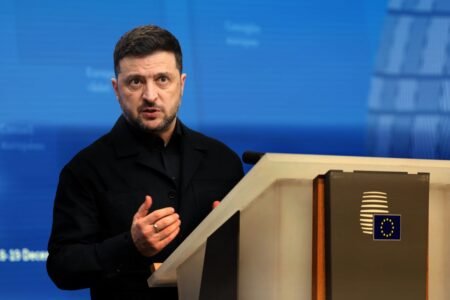(BRUSSELS) – The European Commission and the EU’s foreign affairs chief presented Wednesday an Action Plan to improve military mobility within and beyond the European Union.
Military Mobility is one of the initial projects launched under the EU’s Permanent Structured Cooperation in Defence (PESCO) facility. Facilitating the movement of military troops and assets is seen as essential for European security. Today’s Action Plan identifies a series of operational measures to tackle physical, procedural or regulatory barriers which hamper military mobility. Working closely with the EU Member States and all relevant actors will be key for the implementation of this Action Plan.
“By facilitating military mobility within the EU, we can be more effective in preventing crises, more efficient in deploying our missions, and quicker in reacting when challenges arise,” said the EU’s foreign policy chief Federica Mogherini said: “It will be another step in deepening our cooperation at EU level, also in the framework of the Permanent Structured Cooperation we have formally launched recently, and with our partners, starting with NATO. For us, as EU, cooperation remains the only way to be effective in today’s world.”
Transport Commissioner Violeta Bulc added: “Our objective is to make better use of our transport network, to ensure that military needs are accounted for when planning infrastructure projects. This means a more efficient use of public money and a better equipped transport network, ensuring a quick and seamless mobility across the continent. This is a matter of collective security.”
Today’s plan proposes action in the following areas:
- Military requirements: This is the starting point for an effective and coordinated approach to military mobility across the EU. The European External Action Service (EEAS) and the EU Military Staff will develop military requirements, which reflect the needs of the EU and its Member States, including the infrastructure needed for military mobility. The Council is invited to consider and validate those military requirements by mid-2018.
- Transport infrastructure: Infrastructure policy and investments offer opportunities for more synergies between civilian and military needs. By 2019, the Commission will identify the parts of the trans-European transport network suitable for military transport, including necessary upgrades of existing infrastructure (e.g. the height or the weight capacity of bridges). A priority list of projects will be drawn up. The Commission will take into account possible additional financial support for these projects in the next multi-annual financial framework.
- Regulatory and procedural issues: The Commission will look at options to streamline and simplify customs formalities for military operations and assess the need to align rules for the transport of dangerous goods in the military domain. In parallel, the European Defence Agency will support Member States in developing arrangements on cross-border movement permissions.
The Commission says it will work with the European External Action Service and the European Defence Agency in close coordination with the Member States for the effective implementation of the actions. It promises they will be carried out ‘in full respect of the sovereignty of Member States over their national territory and national decision-making processes’. It say coordination with efforts under the Permanent Structured Cooperation (PESCO) and the separate PESCO project on military mobility will equally be ensured.
The Action Plan will now be submitted to the EU Member States for consideration and endorsement. The first actions are expected to be carried out in the coming months.
A first progress report on the implementation of this Action Plan will be presented to the Member States by summer 2019.








